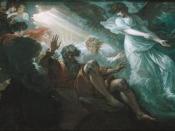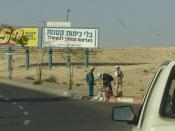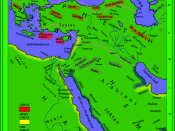The Bible is one of the most common allusive references used in both early and modern literature. Stories like the Creation, Adam and Eve, Joseph and his coat, and even the birth of Christ; all are used to help the reader make comparisons between the known and the unknown. The book The Grapes of Wrath is no exception when it comes to using Biblical allusions. One main story that stands out, however, is the great Exodus story. Many different aspects of the two stories coincide with one another. There are five main ones that can be found throughout the story: a child's float down a river, slavery, the reason for leaving, the length of the journey, and the destination.
The origin of Moses is probably one of the most well known stories from the Old Testament, besides that of Adam and Eve. Moses was born a poor Hebrew slave, but shortly after his birth Pharaoh orders all male Hebrew children under the age of two to be killed.
His mother puts him in a basket and floats him down a river. There Pharaoh's sister finds him, and she takes him in as her own son. It is from this point that Moses can eventually free the children of Israel.
When Uncle John sends the stillborn baby down the river, he too is sending it off to a "better place." For many people, especially Christians, death is not the end of life. Uncle John sends Rose of Sharon's child away from the flooding, down a river, to a better place. He also wants the baby to be a silent witness to the suffering of the laborers. Just like Moses was able to free the slaves by telling Pharaoh to let them go, the baby's rotting corpse can tell the world the...


